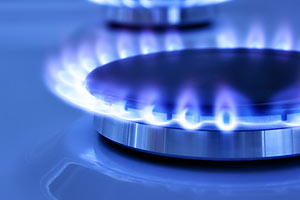Ru
|
Eng
Potupchik: A brand new fuel and energy balance for Belarus in 2015
15.10.2014

The fuel and energy balance of Belarus in 2015 will considerably differ from the ones in previous years, Energy Minister of Belarus Vladimir Potupchik told media on 15 October, BelTA has learned.
“We have been gradually reducing the import of electricity and are planning to increase the export of the Belarusian electricity next year. Although the gas consumption will stay the same, its structure will change,” the minister said. In his words, in 2015 the energy-producing industry is expected to consume 1.6 billion cubic meters of gas less (it is approximately $250 million) than in 2005 when Belarus launched the first program to modernize the energy sector in the country.
As was reported earlier, Belarus plans to import about 2.5 billion kWh of electricity in 2015. “This figure is not final. This figure will be finalized taking into account the ongoing upgrade effort and the need to ensure reliable operation of the Belarusian energy system," the head of the ministry said. He added that the volumes will be fine-tuned as everything depends on the price. "The price will be negotiated, and taking into account the existing work to upgrade the Belarusian energy system, it has been declining steadily," stated the minister.
The minister noted that the Belarusian energy market influences the general pricing process.
Belarus annually reduces the import of electricity. In 2014, the import was reduced by almost half compared with 2012. This trend is expected to remain in place.
According to Belenergo, Belarus’ plans to become self-sufficient in terms of electricity production are feasible given the ongoing modernization: gradually the existing facilities are upgraded and the new ones are built to produce more electricity without increasing and even reducing fuel input.
Today Belarus is the CIS leader in terms of reduction of fuel input to produce electricity. In January-August this figure decreased from 274.6 grams of fuel equivalent to produce 1 kWh down to 256.1 grams per 1 kWh. The level of wear and tear of the fixed assets decreased by 60.7% in 2005 to 41% in 2013.
“We have been gradually reducing the import of electricity and are planning to increase the export of the Belarusian electricity next year. Although the gas consumption will stay the same, its structure will change,” the minister said. In his words, in 2015 the energy-producing industry is expected to consume 1.6 billion cubic meters of gas less (it is approximately $250 million) than in 2005 when Belarus launched the first program to modernize the energy sector in the country.
As was reported earlier, Belarus plans to import about 2.5 billion kWh of electricity in 2015. “This figure is not final. This figure will be finalized taking into account the ongoing upgrade effort and the need to ensure reliable operation of the Belarusian energy system," the head of the ministry said. He added that the volumes will be fine-tuned as everything depends on the price. "The price will be negotiated, and taking into account the existing work to upgrade the Belarusian energy system, it has been declining steadily," stated the minister.
The minister noted that the Belarusian energy market influences the general pricing process.
Belarus annually reduces the import of electricity. In 2014, the import was reduced by almost half compared with 2012. This trend is expected to remain in place.
According to Belenergo, Belarus’ plans to become self-sufficient in terms of electricity production are feasible given the ongoing modernization: gradually the existing facilities are upgraded and the new ones are built to produce more electricity without increasing and even reducing fuel input.
Today Belarus is the CIS leader in terms of reduction of fuel input to produce electricity. In January-August this figure decreased from 274.6 grams of fuel equivalent to produce 1 kWh down to 256.1 grams per 1 kWh. The level of wear and tear of the fixed assets decreased by 60.7% in 2005 to 41% in 2013.
NEWSWIRE
17.07.2024
02.07.2024
27.06.2024
21.06.2024
19.06.2024
06.06.2024
06.06.2024
06.06.2024
06.06.2024
06.06.2024













